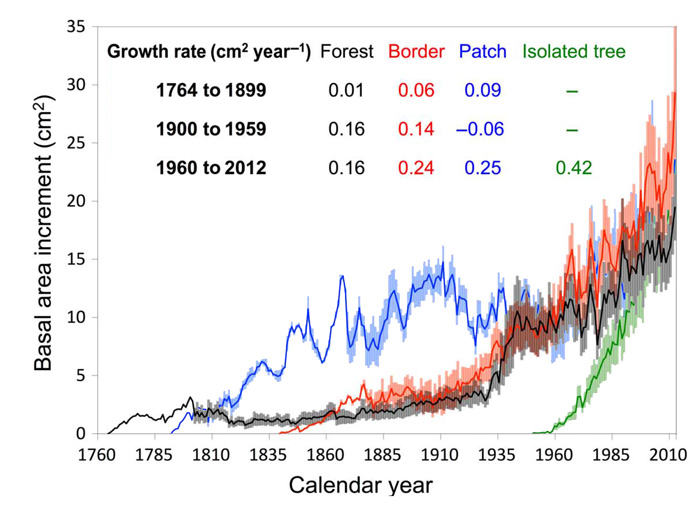| Follow @co2science |
Paper Reviewed
Silva, L.C.R., Sun, G., Zhu-Barker, X., Liang, Q., Wu, N. and Horwath, W.R. 2016. Tree growth acceleration and expansion of alpine forests: The synergistic effect of atmospheric and edaphic change. Science Advances 2: e1501302.
Introducing their work, Silva et al. (2016) report that "in some alpine ecosystems, the combined effect of climate warming and rising CO2 levels has been shown to enhance the productivity of dominant trees (Jacoby et al., 1996; Korner, 2012; Salzer et al., 2009), which could lead to forest expansion." Working on the eastern side of the Tibetan Plateau, the team of two U.S. scientists and four Chinese researchers thus set out to investigate this phenomenon and the mechanisms driving it. More specifically, they "sampled dominant Abies faxoniana trees and combined dendrochronological and isotopic measurements to examine changes in tree growth, resource use, and time of establishment over the past ~250 years." And what did that work reveal?
As illustrated in Figure 1, Silva et al. report that the dendrochronological analyses showed steady increases in tree growth since the early 1900s that intensified during the 1930s and 1960s, reaching "unprecedented levels" during the past few decades in which "annual growth increments were 5 to 10 times higher than those documented in the 19th century." As for the cause of this incredible growth, the six scientists report that their "measurements of stable isotopes (carbon, oxygen, and nitrogen) in tree rings indicate that tree growth has been stimulated by the synergistic effect of rising atmospheric CO2 and a warming-induced increase in water and nutrient availability from thawing permafrost." And this great greening of the earth continues unabated.

Figure 1. Average growth of trees sampled in old growth forests (black), forest border (red), forest patches (blue), and isolated trees (green). Shaded areas represent SEs. Calculations revealing the average growth rates from the slopes of linear regressions (P < 0.001) of basal area increments over time are also shown. Adapted from Silva et al. (2016).
References
Jacoby, G.C., D'Arrigo, R.D. and Davaajamts, T. 1996. Mongolian tree rings and 20th-century warming. Science 273: 771-773.
Korner, C. 2012. Alpine Treelines; Functional Ecology of the Global High Elevation Tree Limits. Springer, Basel, p. 220.
Salzer, M.W., Hughes, M.K., Bunn, A.G. and Kipfmueller, K.F. 2009. Recent unprecedented tree-ring growth in bristlecone pine at the highest elevations and possible causes. Proceedings of the National Academy of Science U.S.A. 106: 20,348-20,353.
Posted 17 February 2017



